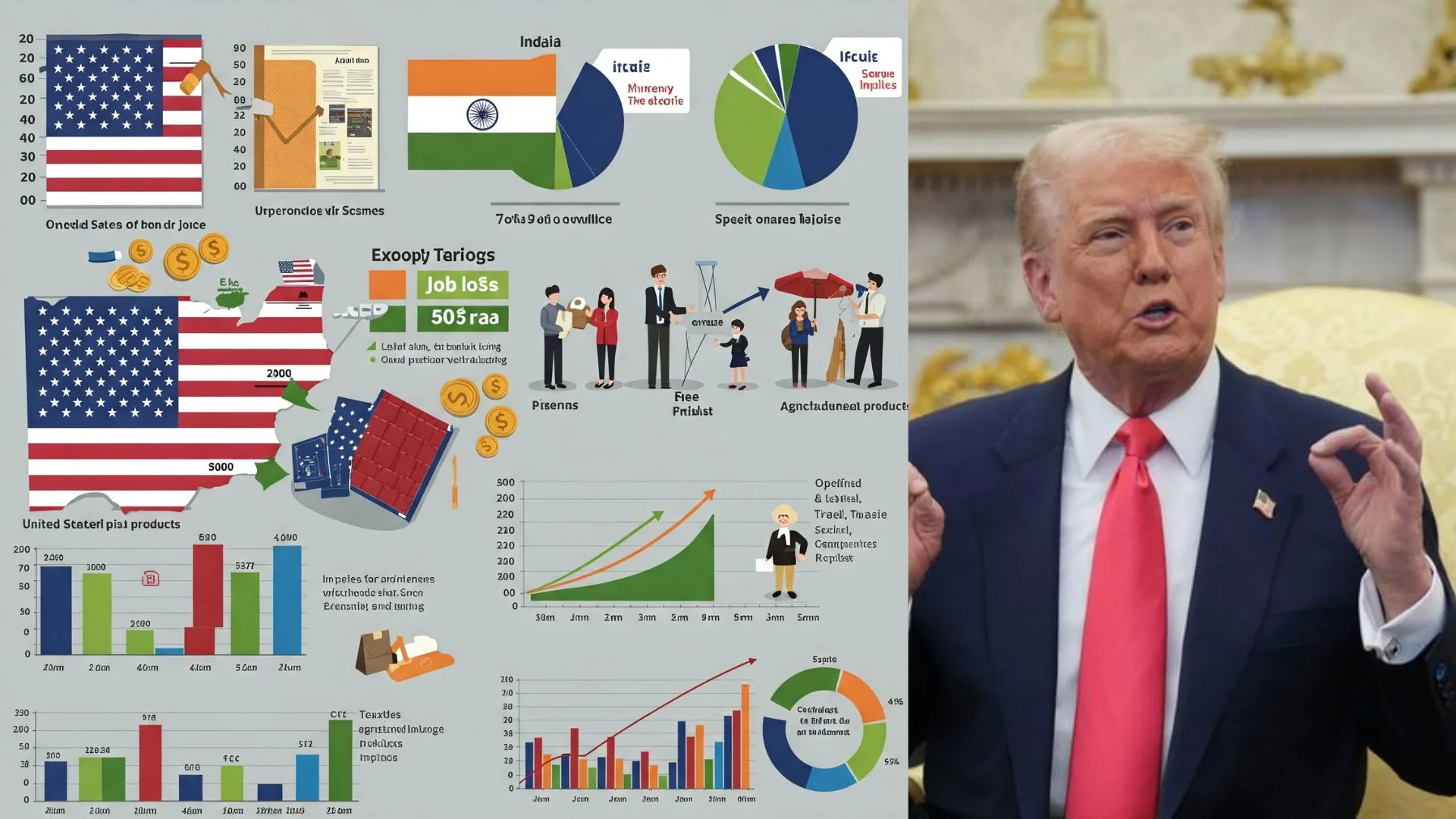The US-India trade relationship, which exceeds $120 billion every year, has been disrupted by increasing US tariffs on Indian products. From steel and aluminum to textiles and electronics, the tariffs have transformed trade patterns, impacting sectors on both sides.
This blog explores the economic impact, sector-wise effects, and future implications of US tariffs on India.
1. Why Did the US Impose Tariffs on India?
The US administration, under Section 232 (national security) and Section 301 (unfair trade practices), imposed tariffs on various Indian products such as:
- Steel (25%) and aluminum (10%) (2018)
- Textiles, leather, and Agri-Products
- solar panels and electronics
Tariff reasons:
- Reduction in trade deficit (US imports more from India than it exports)
- Protection of American industries (e.g., steel producers)
- Pressure to open markets for India (e.g., dairy, medical devices)

2. Important Economic Effects on India
A. Fall in Principal Exports
Steel & aluminum exports fell by 35% after tariffs.
Textile and apparel exports decelerated, impacting SMEs.
B. Increase in Cost of Production
Indian producers encountered increased input prices because of retaliatory tariffs on US inputs.
C. Change in Trade Partners
India ramped up exports to EU, ASEAN, and Middle East to offset.
D. Foreign Investment Fears
Certain US companies postponed investments in India due to uncertainty over trade.
3. India’s Retaliation Tariffs & Negotiations
India retaliated with tariffs on US apples, almonds, and motorcycles but then suspended some in a bid to defuse tensions.
Current trade negotiations:
- US-India Trade Policy Forum (TPF) talks ongoing.
- Possible limited trade deal to reinstate GSP (Generalized System of Preferences) benefits.
4. Long-Term Perspective
Diversification of supply chains could break the reliance on US markets.
New trade arrangements (e.g., with UK, EU) could make up for losses.
Tech and defense partnerships (such as iCET) could cement connections beyond tariffs.
Conclusion: A Balancing Act
While US tariffs have put a strain on India’s export economy, they also compel India to diversify trade and increase self-reliance. The destiny of US-India trade is dependent on negotiations, geopolitical convergence, and economic flexibility.

